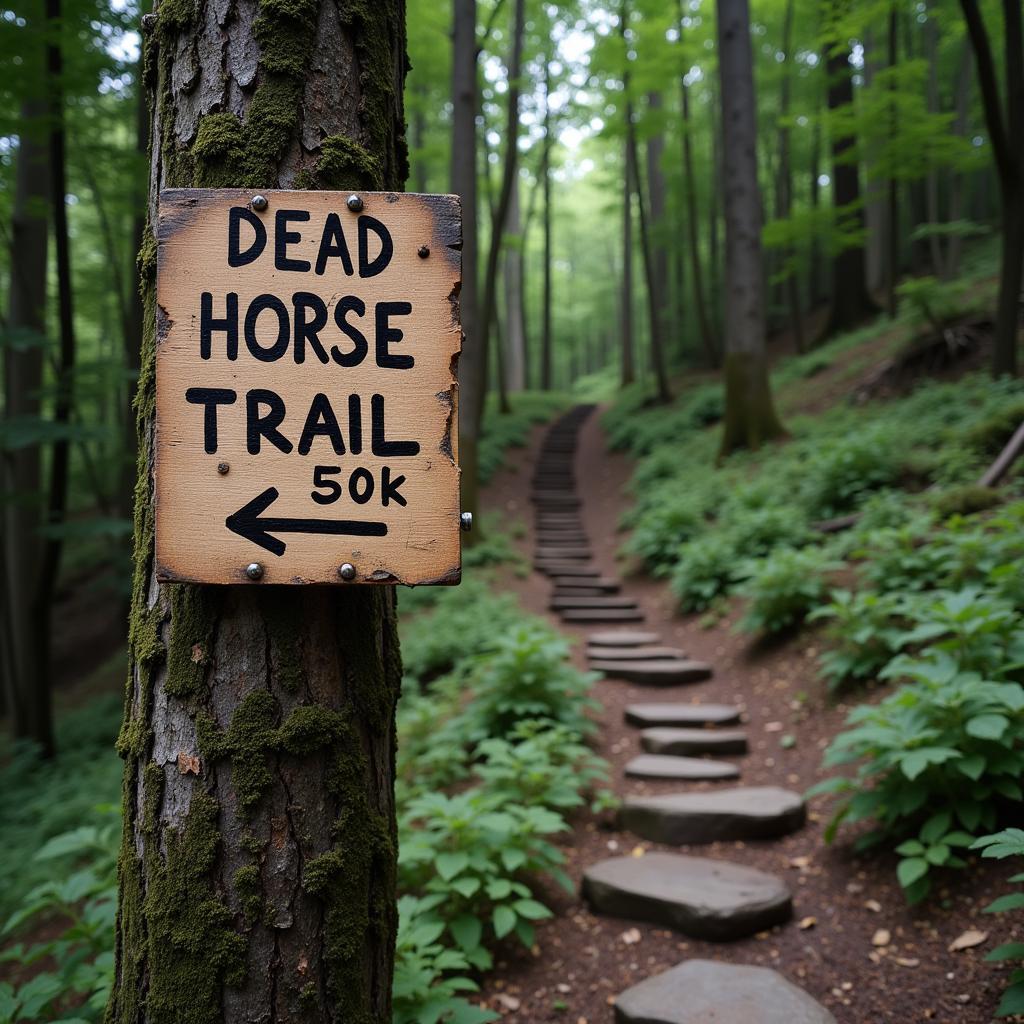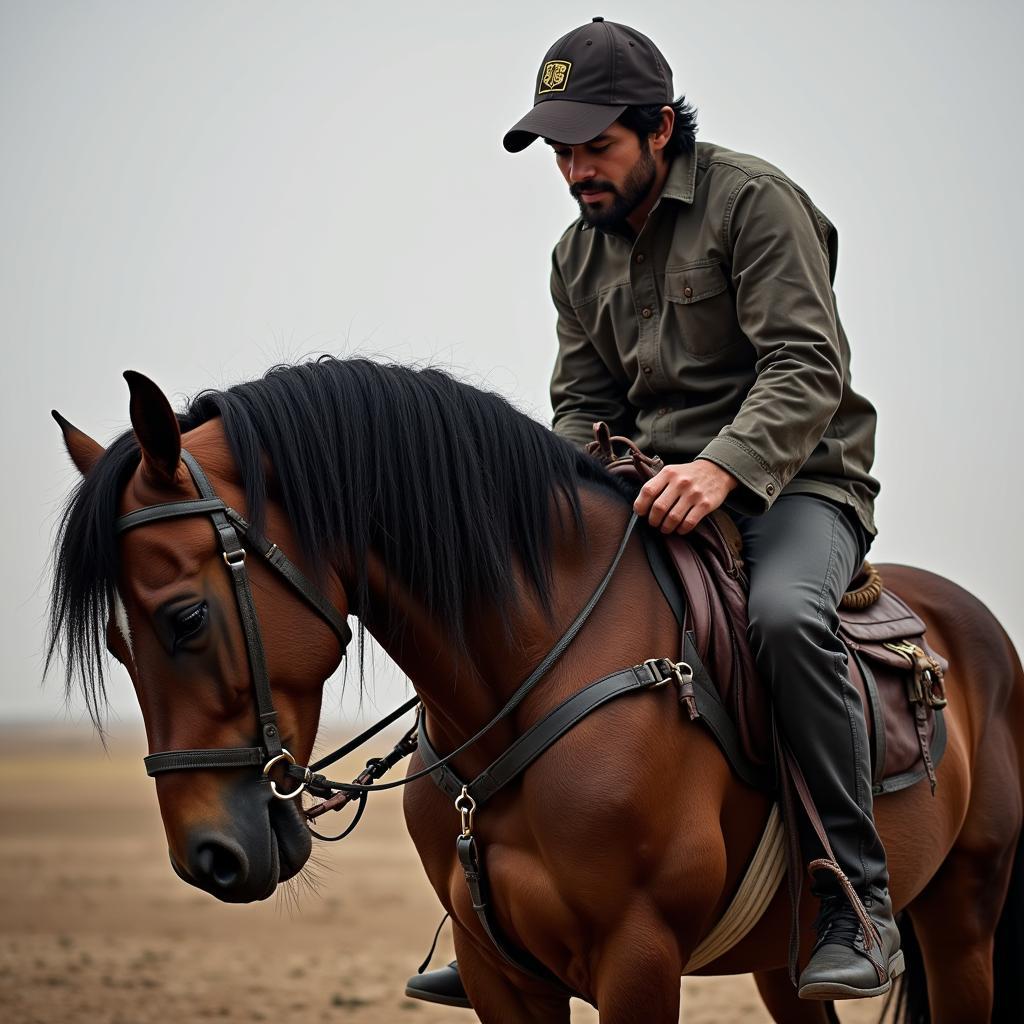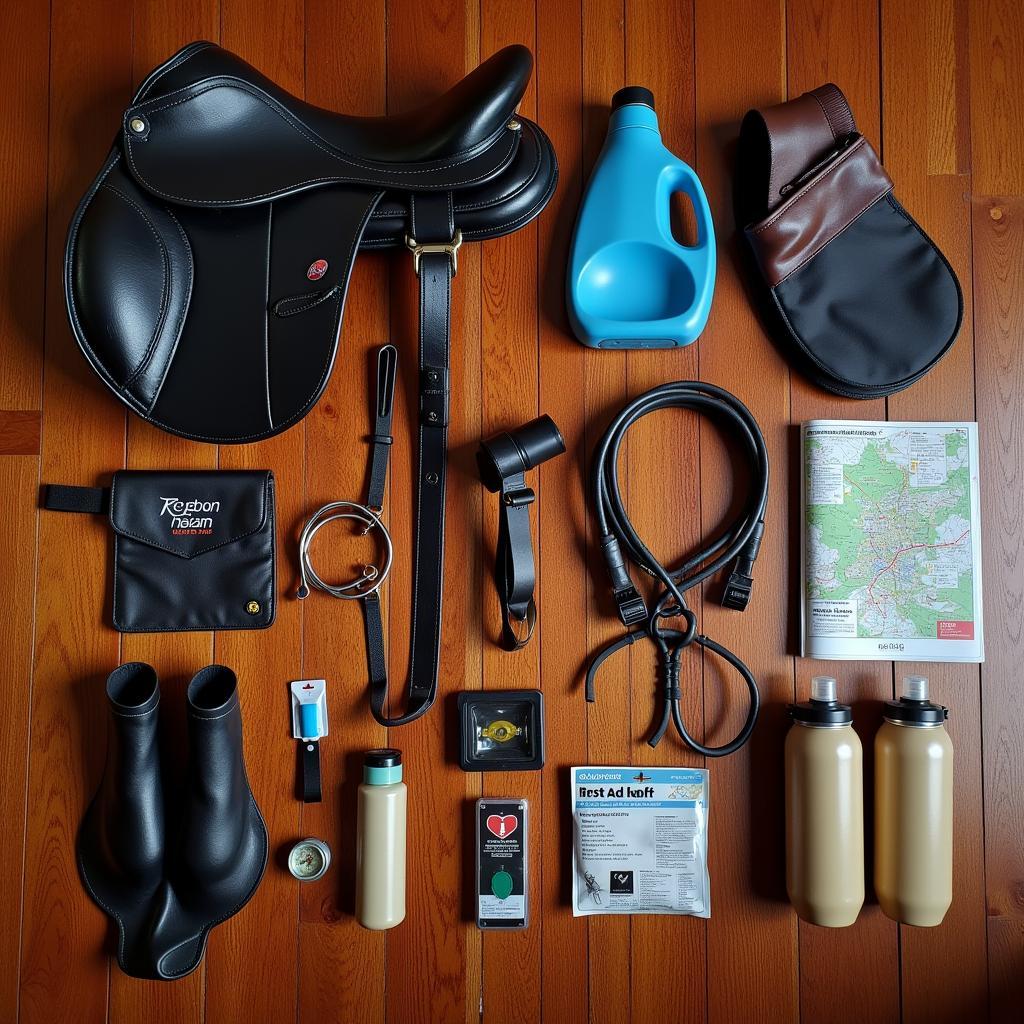The phrase “Dead Horse 50k” might seem confusing at first glance, especially in the context of the equestrian world. What does it mean, and why is it associated with horses and the number 50,000?
 Trail Sign Indicating a Difficult Path
Trail Sign Indicating a Difficult Path
Unraveling the Mystery: It’s Not Literal!
Rest assured, the term “dead horse 50k” doesn’t involve any harm to our equine companions. It’s actually a colloquialism used to describe a particularly grueling or challenging 50-kilometer (31-mile) horseback ride or endurance competition.
The origin of the phrase is often debated, but many believe it stems from the demanding nature of such long-distance rides. Just like a rider might push their horse to its absolute limit, finishing a 50k can feel like you’ve ridden a “dead horse.”
 Rider and Horse Taking a Break After a Long Ride
Rider and Horse Taking a Break After a Long Ride
What Makes a “Dead Horse 50k” So Tough?
Several factors contribute to the difficulty of a “dead horse 50k”:
- Distance: 50 kilometers is a significant distance to cover on horseback, requiring both horse and rider to be in peak physical condition.
- Terrain: These rides often traverse challenging terrain, including hills, mountains, rocky paths, water crossings, and dense forests.
- Weather Conditions: Extreme heat, cold, wind, or rain can significantly impact the difficulty of the ride.
- Time Constraints: Some 50k competitions have strict time limits, adding pressure on riders to maintain a consistent pace.
Preparing for a “Dead Horse 50k”
Successfully completing a challenging 50k ride requires meticulous preparation and a deep understanding of your horse’s capabilities.
Essential Preparation Tips:
- Consult Your Veterinarian: Ensure your horse is healthy and fit enough to handle the demands of a 50k ride.
- Gradual Conditioning: Gradually increase your horse’s training mileage and intensity over several months leading up to the event.
- Practice on Similar Terrain: Acclimate your horse to the type of terrain they’ll encounter during the ride.
- Proper Nutrition and Hydration: Provide your horse with a balanced diet and ample water, especially in the days leading up to the ride.
- Invest in Quality Gear: Use well-fitting tack and appropriate riding attire for both you and your horse.
 Essential Gear for Long-Distance Horse Riding
Essential Gear for Long-Distance Horse Riding
“Dead Horse 50k”: A Badge of Honor
Completing a “dead horse 50k” is a testament to the strength, endurance, and partnership between horse and rider. While the phrase might sound daunting, it represents an incredible accomplishment in the equestrian world.
Remember, responsible riding and the well-being of your horse should always come first. If you’re considering tackling a challenging long-distance ride, consult experienced equestrians and seek professional guidance to ensure you’re well-prepared for this demanding but rewarding experience.
Need Help with Your Equestrian Journey?
For any questions or support regarding horse care, training, or finding the right gear, don’t hesitate to contact us. Call us at 0772127271, email us at [email protected], or visit us at QGM2+WX2, Vị Trung, Vị Thuỷ, Hậu Giang, Việt Nam. Our dedicated team is available 24/7 to assist you.